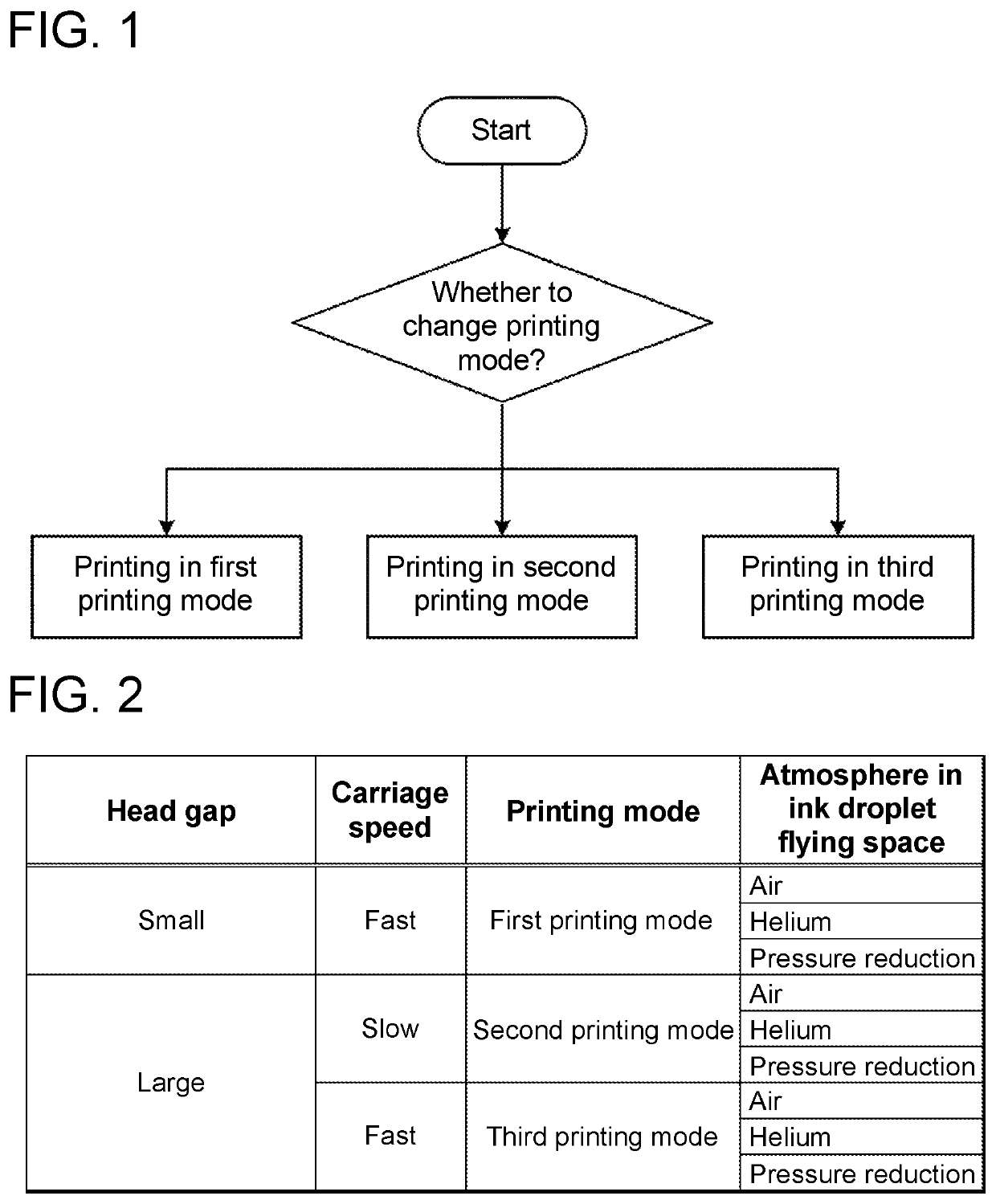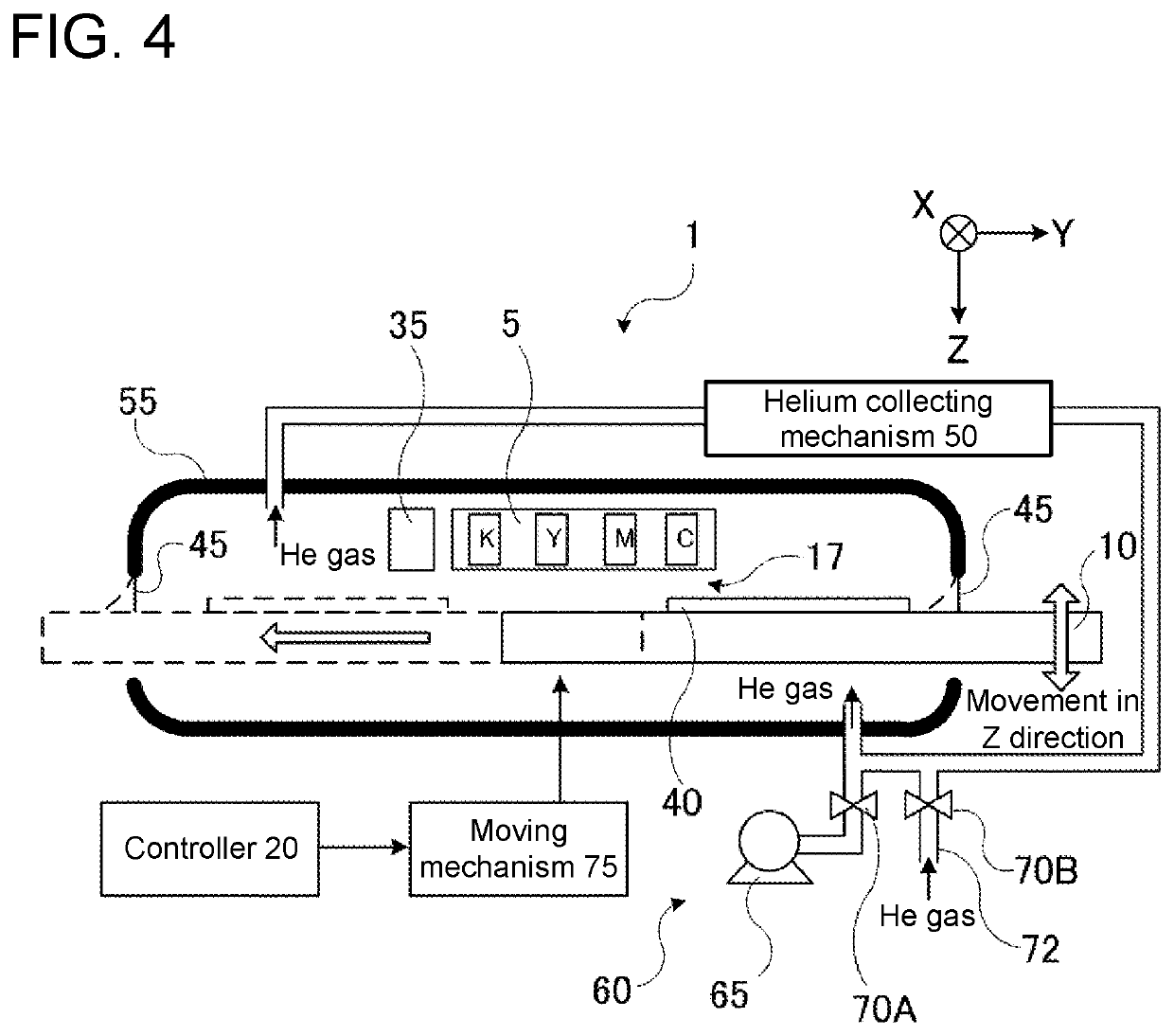Inkjet printing apparatus
a printing apparatus and inkjet technology, applied in printing, typewriters, power drive mechanisms, etc., can solve the problems of difficult use of recording mediums with thicknesses w of 1 mm or more, difficult printing of textile printing using thick mediums such as fabrics, and difficult printing with inkjet printing apparatus. achieve the effect of high-resolution printing
- Summary
- Abstract
- Description
- Claims
- Application Information
AI Technical Summary
Benefits of technology
Problems solved by technology
Method used
Image
Examples
first embodiment
[0050]FIG. 1 is a drawing that illustrates selectable printing modes in an inkjet printing apparatus 1 according to this disclosure. The inkjet printing apparatus 1 has a mode storage (not illustrated in the drawings) in which a plurality of printing modes are storable. The printing mode may be selected by a user manipulating a switch or may be selected by software controlled by a controller 20.
[0051]Examples of the printing modes are given below as three printing modes.
[0052]First Printing Mode
[0053]Regular printing mode (high-speed printing mode): printing mode in which conventional one-pass scans or multi-pass scans are performed.
[0054]Second Printing Mode
[0055]High-resolution and wide-gap printing mode (low-speed printing mode): printing mode in which a scanning speed of a head that moves relative to a medium (recording medium) is decreased to, for example, one-tenth or less or desirably one-hundredth or less of an initial ejection speed VO of ink droplets, or scanning is tempor...
second embodiment
[0086]FIG. 4 is a drawing of an inkjet printing apparatus 1 according to this disclosure. The inkjet printing apparatus 1 includes a head unit 5 from which ink is ejected, a mounting unit 10 having an upper surface to be mounted with a recording medium 40, a moving mechanism 75 that moves the mounting unit 10 in X-Y direction illustrated in FIG. 4 which is horizontal direction, and a distance changing mechanism 30 (not illustrated in the drawing) that changes a relative distance between the head unit 5 and the mounting unit 10 (head gap G). The inkjet printing apparatus 1 includes an isolation chamber 55 that isolates the ink droplet flying space 17 between the head unit 5 and the recording medium 40 from atmospheric air, a moving mechanism 75 that moves the mounting unit 10 in X-Y direction illustrated in the drawing which is horizontal direction, a gas replacement device 60 that replaces gas in the ink droplet flying space 17 of the isolation chamber 55 with helium gas, and a heli...
PUM
 Login to View More
Login to View More Abstract
Description
Claims
Application Information
 Login to View More
Login to View More - R&D
- Intellectual Property
- Life Sciences
- Materials
- Tech Scout
- Unparalleled Data Quality
- Higher Quality Content
- 60% Fewer Hallucinations
Browse by: Latest US Patents, China's latest patents, Technical Efficacy Thesaurus, Application Domain, Technology Topic, Popular Technical Reports.
© 2025 PatSnap. All rights reserved.Legal|Privacy policy|Modern Slavery Act Transparency Statement|Sitemap|About US| Contact US: help@patsnap.com



